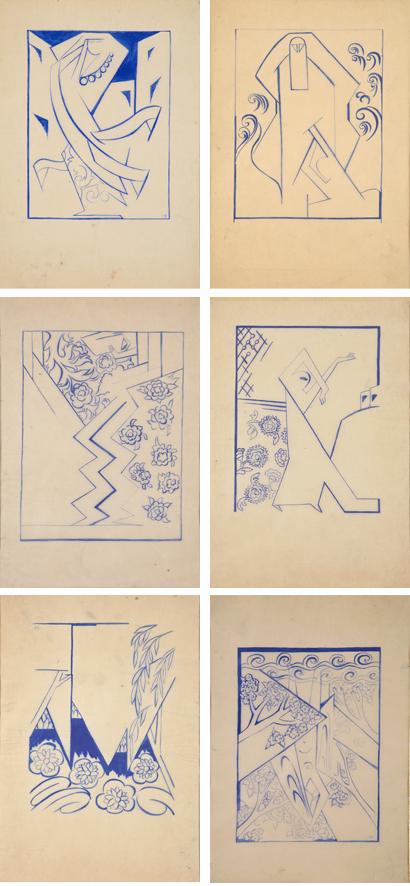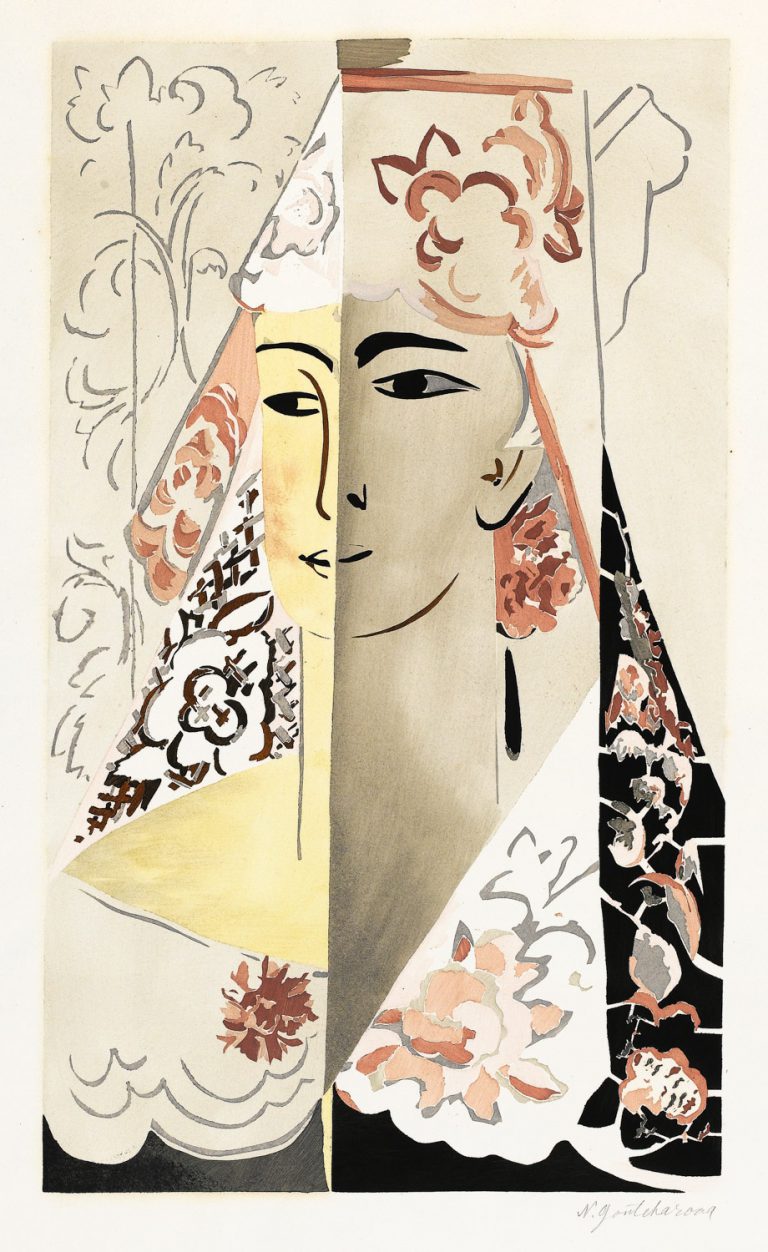Biography
Natalia Goncharova was a Russian painter, graphic artist and stage designer, an eminent figure of the Russian avant-garde of the early 1910s. She was born on 21 June 1881 to a noble family. Her great-aunt was Natalia Goncharova, wife of the poet Alexander Pushkin.
In 1901 Goncharova entered the Sculpture Department of the Moscow School of Painting, Sculpture and Architecture where she studied under Sergei Volnukhin and Paolo Troubetzkoy and then in the painting workshop of Konstantin Korovin.
Goncharova’s early works were inspired by impressionism and were a success at Mir Iskusstva’s exhibitions. She was invited by Sergei Diaghilev to take part in the Salon d’Automne in Paris. Her cooperation with the great ballet impresario resulted in her stage designs for Anatoly Lyadov’s Russian Fairy Tales, Albéniz’ Triana, Maurice Ravel’s Rapsodie Espagnole, Hugo von Hofmannsthal’s Colombina’s Scarf, Modest Mussorgsky’s Night on Bald Mountain and Igor Stravinsky’s Les noces (The Wedding) and The Firebird.
The most important event in Goncharova’s life and the history of the Russian avant-garde was her meeting with Mikhail Larionov, a Russian painter, graphic artist, stage designer and art theorist. Larionov was later recognised as the founder of rayonism (a style of abstract art) and Goncharova helped him to develop this new movement.
Art historians group Goncharova’s works by periods: impressionism in 1903-1906, primitivism in 1906-1913, futurism in 1911-1912 and rayonism in 1912-1913. Later she developed various styles, but often preferred the aesthetics of primitivism. Her stage designs incorporated elements of folk art (costumes and patterns). They reflected her love for stylisation, contrasting colours, naïve perspective and proportions. Goncharova had a very special attitude to primitivism: she often used flat, contoured splashes of colour.
In the 1950s Goncharova painted numerous still lifes and her “cosmic series”. She died in 1962 in Paris.
The public’s interest in Larionov and Goncharova revived in the 1960s when their exhibitions were organised in many countries and cities of Europe and America.
Goncharova’s works are represented in many museum collections, including the Tretyakov Gallery, the Russian Museum, the Pushkin Museum of Fine Arts, the Alexey Bakhrushin State Central Theatre Museum and the Centre Georges Pompidou in Paris.


